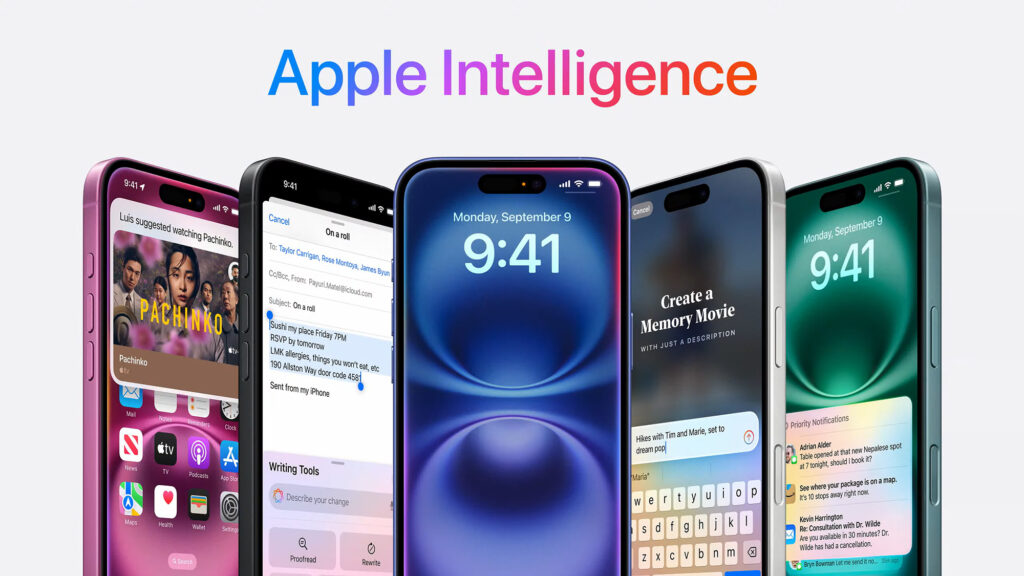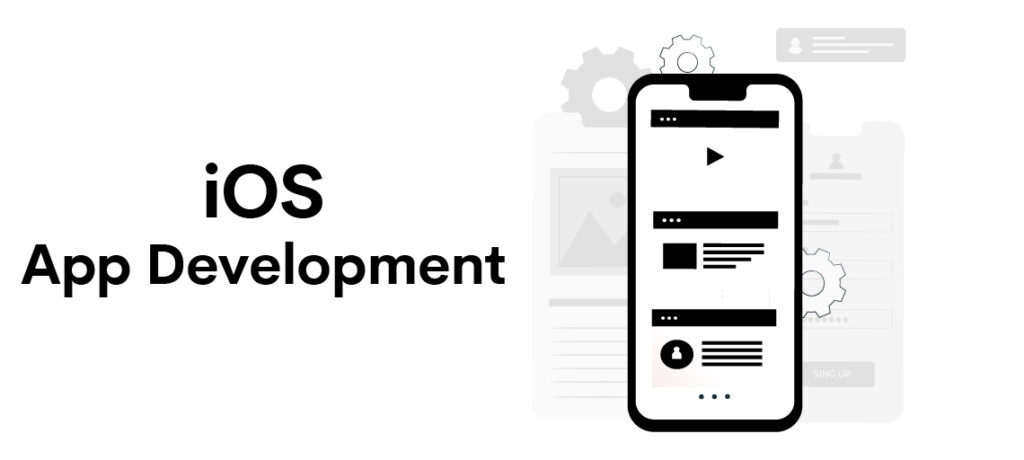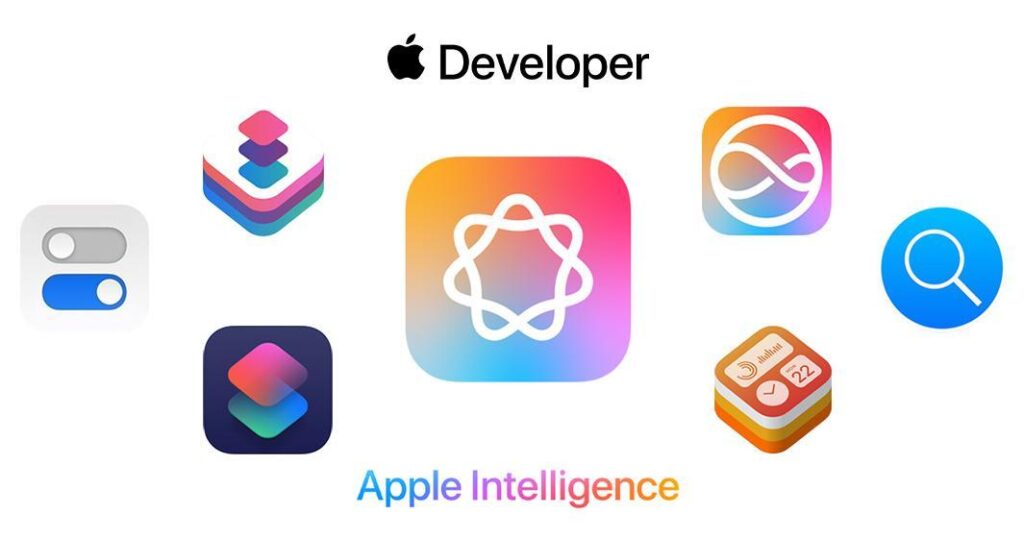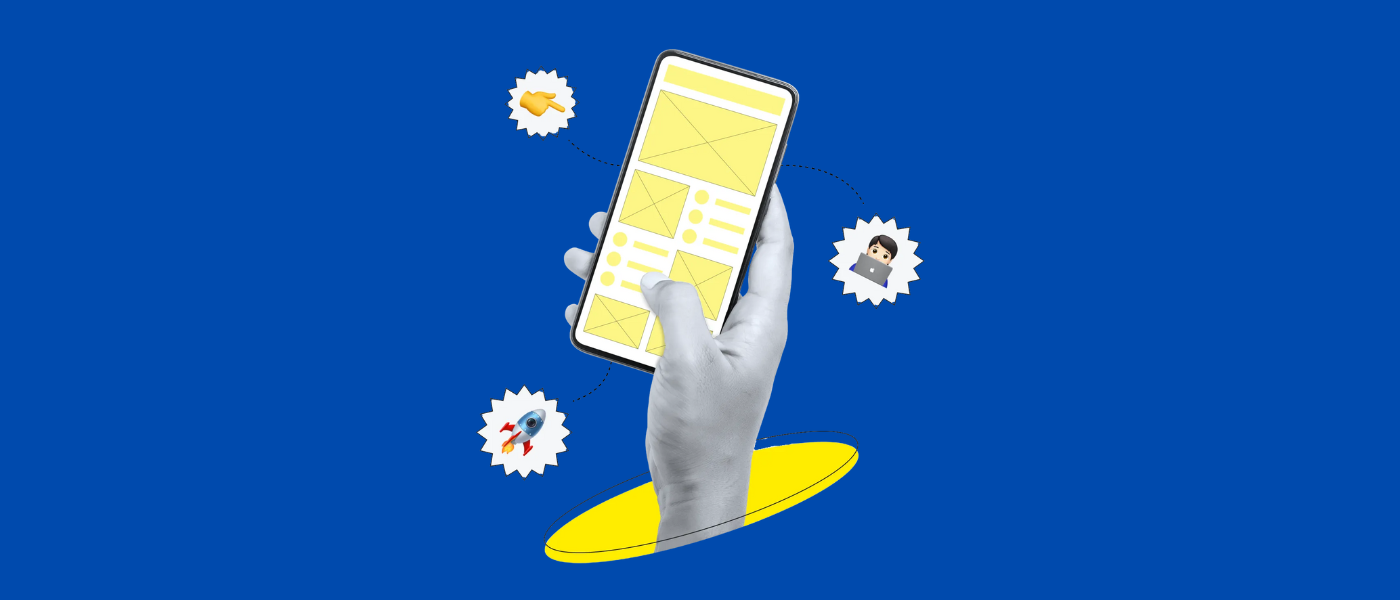Introduction
Remember when SwiftUI dropped and changed everything?
Well, buckle up. Apple Intelligence is about to make that look like a minor update.
Something that will fundamentally change the way we create iOS apps in less than 12 months.
If you’re an iOS developer and feeling a mixture of excitement and “oh no, more stuff to learn”, I get it. Trust me, I really do.
Maybe you just got comfortable with Swift Concurrency. Perhaps you’re still wrapping your head around the latest SwiftUI updates. And now Apple drops this bomb: an entirely new intelligence layer that touches everything from Xcode to the iPhone’s core systems.
The exhaustion is real. The imposter syndrome? Even more real.
But here’s what nobody’s telling you: this change is different. It’s not just another API to memorize or another pattern to implement.
Apple Intelligence is the kind of shift that creates entirely new careers, transforms existing apps, and yes, might just make your life as a developer significantly easier.
Think about it. When was the last time Apple introduced something that could actually write code alongside you? Debug problems before users report them? Make your apps genuinely understand what users want before they ask?
The other? Well, let’s just say nobody wants to be the developer still building jQuery websites in 2024.
The good news? You’re here. You’re reading this
After you read this guide, you are going to be very sure of the sequence of events, their significance, and especially what you have to do. No fluff. No useless theory. Only real, feasible insights that one developer shares with another.
So grab your coffee (or your beverage of choice, no judgment here). Close those 47 Stack Overflow tabs for a minute. Let’s dive into what Apple Intelligence really means for you, your apps, and your career.
Ready? Let’s do this.
Understanding Apple Intelligence: What It Really Means

Let’s cut through the marketing fluff.
Apple Intelligence isn’t just Siri getting smarter (though that’s happening too). It’s Apple’s entire ecosystem becoming genuinely intelligent.
Think on-device AI that actually understands context. Personal without being creepy. Powerful without draining your battery.
Here’s what makes it different:
- Everything runs locally when possible
- Your data stays yours
- It learns from user behavior without sending that data anywhere
- It integrates deeply with existing iOS frameworks
In contrast to ChatGPT or Google’s AI, Apple is not aiming to provide a solution for every possible use.
Instead, they are concentrating precisely on having your iPhone really understand you. Plus, what about developers? The new possibilities that come with it are beyond our previous expectations.
The privacy-first approach isn’t just marketing. It’s architectural.
This changes how we think about AI features entirely.
Current iOS Development Landscape: Where We Stand Today

Be honest, how many of you have actually shipped an app with Core ML?
Right now, most iOS developers treat AI like that gym membership they bought in January. Nice to have. Rarely used. Slightly guilt-inducing.
We’ve got Core ML sitting there, Create ML gathering dust, and a Vision framework that most of us only touch when we absolutely have to. The tools exist, but they feel disconnected. Clunky. Like they’re speaking a different language than the rest of UIKit or SwiftUI.
And don’t even get me started on trying to explain to clients why adding “simple AI features” will take three sprints.
The current pain points are real:
- Steep learning curve for ML integration
- Large model sizes are eating up app storage
- Battery drain concerns
- The eternal “this works perfectly in testing, but fails for real users” problem
Sound familiar? Yeah, thought so.
Read Also: Best Mobile AI Frameworks in 2025: From ONNX to CoreML and TensorFlow Lite
Key Features for iOS Developers

Okay, here’s where things get exciting.
Imagine Xcode actually understanding what you’re trying to build. Not just autocomplete on steroids, but genuine “oh, you’re building a shopping app, here’s the payment flow you probably need” intelligence.
The new APIs coming in 2026 aren’t just incremental updates:
- Smart Siri Integration – Your app can now have actual conversations. Not scripted responses. Real, contextual interactions that make sense.
- Predictive UI Components – SwiftUI views that adapt before users even realize they need something different. The button appears right when they’re looking for it. The form field validates itself based on context.
- On-Device Training – This is huge. Your app can learn from each specific user without any data leaving their phone. Privacy and personalization, finally playing nice together.
- Intelligent Debugging – Xcode will actually state, “The user locations are crashing because of X, and this is the way to solve it.”
I understand, I understand. It seems like a fairy tale, are you listening?
Real-World Impact: How Your Development Process Will Transform
Next, I want to take you on a journey through the future of iOS app development in 2026.
Apple Intelligence has already identified three UX bottlenecks and suggests fixes. Not generic best practices, actual solutions based on how YOUR users interact with YOUR app.
Testing? Your app now tests itself. It simulates the journeys of thousands of users, finding cases you might never have thought about. That obscure bug that only happens when users have exactly 73 photos and it’s a Tuesday? Found and fixed.
Here’s what changes day-to-day:
- Prototypes are built from rough sketches
- Accessibility features auto-implement (and actually work)
- Localization happens in real-time, with context
- Performance optimization becomes mostly automatic
But the biggest change?
Personalization at scale becomes trivial. Every user gets their own unique experience. The fitness app that knows you skip workouts on Mondays.
The note-taking app that formats things exactly how you prefer. The game that adjusts difficulty based on your actual skill, not some arbitrary setting.
This isn’t science fiction. This is next year.
New Opportunities and App Categories
Some apps that seemed impossible are about to become weekend projects.
- Personal AI Assistants – Not Siri. Your own, custom AI that lives in your app. A fitness coach app that actually knows your body. A tutor who adapts to how you learn. A therapist who remembers every conversation (privately, securely).
- Predictive Health Apps – Apps that notice patterns before problems arise. “Your sleep pattern suggests you might be getting sick. Here’s what to do.”
- Hyper-Local Social Networks – Connect with people based on nuanced behavioral patterns and interests, not just “like the same music.”
- Adaptive Learning Platforms – Educational apps that completely reshape learning based on pace and style.
The industries that win the biggest:
- Healthcare (early detection, personalized treatment plans)
- Education (truly adaptive learning)
- Productivity (apps that work how you think)
- Entertainment (content that morphs to your mood)
- Accessibility (apps that adapt to any ability level)
Small developers, this is your moment. You can now compete with big companies on personalization. The playing field is now more level.
Challenges and Considerations
However, let’s be real. It’s not all sunshine and rainbows.
The learning curve? It’s there. If you’re still avoiding async/await, Apple Intelligence might feel overwhelming. The good news is you don’t need a PhD in machine learning.
The bad news is you do need to think differently about app architecture.
Hardware fragmentation becomes real. Your beautiful AI features might only work on iPhone 15 Pro and up. How do you handle this gracefully? How do you explain to users why their phone can’t run the best features of your app in 2022?
Performance is another beast entirely.
AI features are hungry. They want processing power, memory, and a battery. Balance becomes everything. Too many intelligent features and your app becomes a battery vampire. Too few and you’re not competitive.
Then there’s the ethical stuff. Just because you can predict user behavior doesn’t mean you should. Where’s the line between helpful and creepy? How do you handle AI bias? What about users who want to opt out entirely?
These aren’t easy questions. But they’re questions we need to answer.
The Apps You Already Built: How They’ll Transform Overnight
Let’s get specific. Painfully specific.
Pull out your phone. Open that app you built last year. The one you’re moderately proud of but know could be better. Got it? Good.
Now let me blow your mind.
- Your Weather App becomes a personal meteorologist. It doesn’t just tell you it’ll rain at 3 PM. It is known you have a meeting in town at 2:30. It is suggested to leave 10 minutes early and bring a compact umbrella. It was discovered that you always forget to do this, so it immediately sends a reminder when you’re taking your keys.
- Your To-Do List App stops being a glorified checkbox. It notices you always postpone gym sessions scheduled after 6 PM. So it stops suggesting evening workouts. It sees you crush tasks after coffee, so it groups your hard stuff at 10 AM. It’s not reading your mind. It’s reading your patterns.
- Your Recipe App transforms into a cooking companion that gets you. Noticed you never have cilantro when a recipe calls for it? It suggests alternatives automatically. Running low on olive oil based on your usage patterns? It adds it to your shopping list before you even notice.
- Your Finance Tracker becomes eerily prophetic. “Depending on your spending patterns, as long as you skip eating out twice this week, you’ll be $200 short for rent.” Or better: “You always spend more on the weekend after payday. Want me to move $100 to savings automatically every Friday?”
Here’s the kicker: you don’t rebuild these apps. You enhance them.
Same codebase. Same UI (mostly). But with Apple Intelligence, you add layers of smartness that feel magical. Users won’t even realize what changed. Things will just… work better. Feel more intuitive. More personal.
I talked to a developer last week who added basic Apple Intelligence to his meditation app. Nothing fancy. Just pattern recognition and smart notifications.
His one-star reviews dropped by 60%.
Why? The app stopped sending “time to meditate!” notifications during the user’s regular meeting times. It was learned that when people actually meditate. It adapted. Such a small change. Such a massive impact.
But my favorite transformation story?
A developer with a language learning app. Traditional approach: daily reminders at 9 AM. Everyone gets the same notification. “Practice your Spanish!” Most users ignore it.
With Apple Intelligence, the app notices when each user actually has free time. Commuting? Here’s an audio lesson. Waiting in line? Quick vocabulary cards. Just opened Twitter for the third time in an hour? “Hey, got 5 minutes for Spanish instead?”
User engagement jumped 240%. Same app. Same content. Just smarter about when and how to engage.
Your photography app that doesn’t auto-enhance based on personal style preferences? Dead.
Your workout app that doesn’t adapt to individual recovery patterns? Replaced.
Your note-taking app that doesn’t organize intelligently based on how users really think? Forgotten.
But here’s the beautiful part: If you built it, you can grow it. You know your app’s soul. You understand your users’ pain points. Apple Intelligence just gives you superpowers to fix them.
That app you’re thinking about right now? The one you built?
It is not obsolete. It will be transformed.
Moreover, you already possess all the resources required to bring it to effect.
How Boolean Inc. Can Help You Navigate This Transition
Wow, the truth is, I understand this feeling of being overwhelmed that this whole thing gives to you.
Your thought might be, “This is incredible, but what should be the first step?” Alternatively, you might be contemplating a business and saying, “Our development team has too much on their plate already.”
That’s where having the right partner makes all the difference.
Boolean Inc. specializes in exactly this kind of technological transition. They’re not just coders-for-hire. They’re developers who actually get the “oh crap, everything’s changing again” feeling.
Here’s what makes them different:
They focus on bridging the gap between where your app is now and where it needs to be. No complete rebuilds. No throwing away months of work. Just smart, strategic integration of Apple Intelligence features that make sense for your specific use case.
Whether you need:
- A strategy session to identify which AI features will actually move the needle for your app
- Hands-on development to implement Apple Intelligence without disrupting your existing roadmap
- Training for your internal team so they can maintain and expand AI features independently
- A full partnership to build something entirely new from the ground up
Boolean Inc. meets you where you are.
The best part? They speak both languages. The technical “here’s how to implement on-device learning” AND the business “here’s how this increases user retention by 40%.”
Because at the end of the day, Apple Intelligence isn’t about being cutting-edge for the sake of it. It’s about building better apps that users actually love.
And sometimes, the smartest move is admitting you need a guide for the journey.
Ready to future-proof your app? Check out what Boolean Inc. can do for you at https://booleaninc.com/
Conclusion
Here’s the truth: Apple Intelligence isn’t optional.
By 2026, apps without AI features will feel like websites without mobile versions. Outdated. Frustrating. Irrelevant.
But, and this is important, you’re not behind. Nobody has this figured out yet. We’re all standing at the starting line together. The developers who win aren’t the ones who know everything. They’re the ones who start experimenting now.
Your action items:
- Download the beta tools this week
- Join the Apple Intelligence community
- Build one tiny AI feature
- Share what you learn
The apps we’ll be building in 2026 will make today’s apps look prehistoric. And you get to be part of that transformation.
Pretty exciting, right?
The future of iOS development isn’t just intelligent. It’s intuitive, personal, and incredibly powerful. And it starts with you taking that first small step.
So, what will you build first? Comment below 👇
Remember: The best time to plant a tree was 20 years ago. The second best time is now. The same goes for learning Apple Intelligence.
FAQs
- Do I need to learn Python or ML algorithms to use Apple Intelligence?
Nope. Apple’s abstractions handle the heavy lifting; you just need to understand Swift and the new APIs.
- Will Apple Intelligence features work on older iPhones?
Some features require an A17 Pro chip or later, but many work on iPhone 12 and up with reduced capabilities.
- Can I monetize AI features, or will Apple restrict that?
You can absolutely monetize. Apple encourages premium features built on its intelligence framework.
- How long does it take to add basic Apple Intelligence to an existing app?
For simple features like smart notifications or predictive UI, expect 2-3 weeks for your first implementation.
- Will using Apple Intelligence drain user batteries significantly?
Apple’s on-device processing is optimized for efficiency. Properly implemented features have minimal battery impact.







